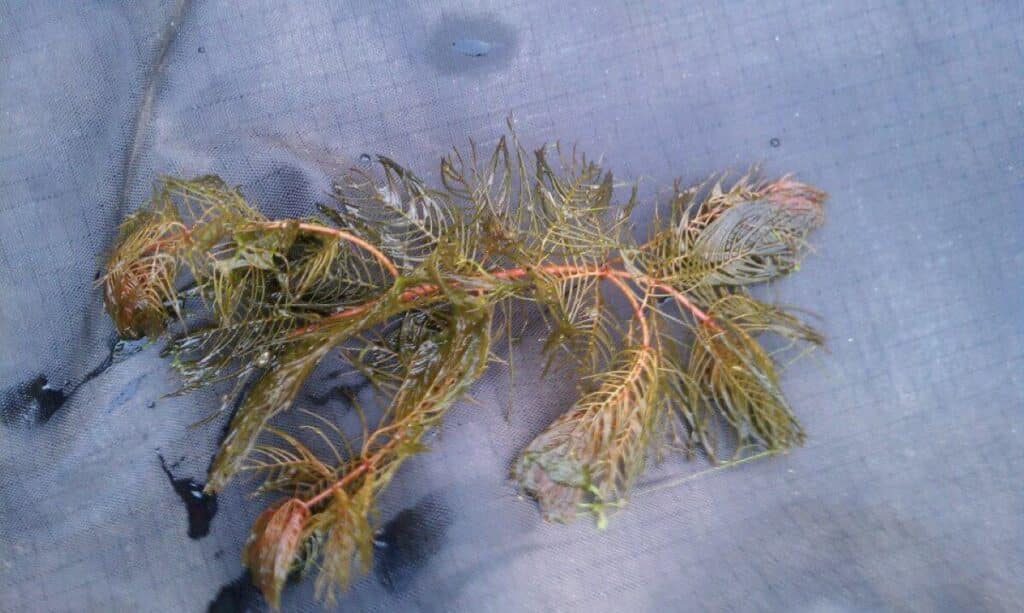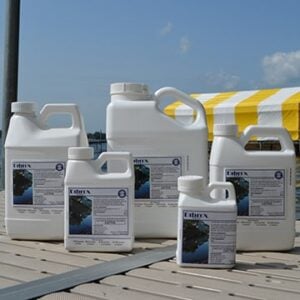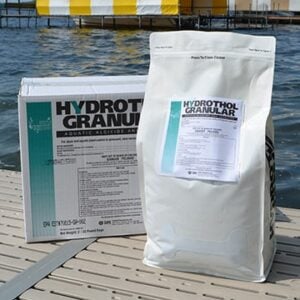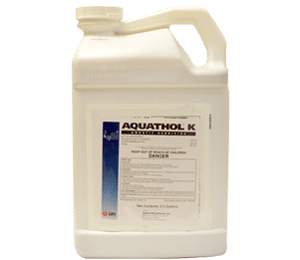
Control Milfoil
There are many types of milfoil, but managing them are the same. The non-native Eurasian watermilfoil can grow in much higher density when compared to its native counterparts such as northern watermilfoil. This uninhibited growth can clog waterways and cause more problems in your pond or lake. The following options can be considered for how to control watermilfoil.
Click here to read more about identifying this plant.
Manual/Mechanical Control:
If you are considering how to remove watermilfoil, physically raking this plant and digging up the roots can be a somewhat effective method of control. However, physical control can be difficult. Many species of milfoil fragment easily and can re-grow from any roots or milfoil plant fragments remaining in the water.
Herbicide Control:
There are multiple options for how to kill watermilfoil that offer great control.
- Dibrox (for ponds or lakes) – liquid that is diluted with water and sprayed over the plants, fast acting.
- Hydrothol (for lakes) – granules that are broadcast over the plants.
- Liquid 2, 4-D (for ponds or lakes) – liquid that is diluted with water and sprayed over the plants. Most effective on treatment areas larger than a half-acre, this allows longer contact exposure time.
- Navigate 2, 4-D (for ponds or lakes) – granules that are broadcast over the plants. Most effective on treatment areas larger than a half-acre, this allows longer contact exposure time.
- Aquathol K/Super K (for ponds or lakes) – liquid that is diluted with water and sprayed or granules that are broadcast over the plants.
- Spritflo (for ponds with no outflow) – liquid that is poured and spreads throughout the entire body of water, offers extended control. Will offer some control.
Treatment Tips:
When treating watermilfoil,
- Spritflo can be used at the first signs of growth.
- With other herbicides, treat when the plants are established and actively growing.
- Re-treat when the milfoil re-grows, typically six to eight weeks after dying off.
Recommended Products
-
Dibrox®
$25.00 – $142.00 -
Hydrothol® Granular
$134.00 – $259.00 -
2, 4-D Products
$62.00 – $395.00 -
Aquathol® K
$164.00 – $349.00 -
Spritflo®
$129.99 – $1,899.99






